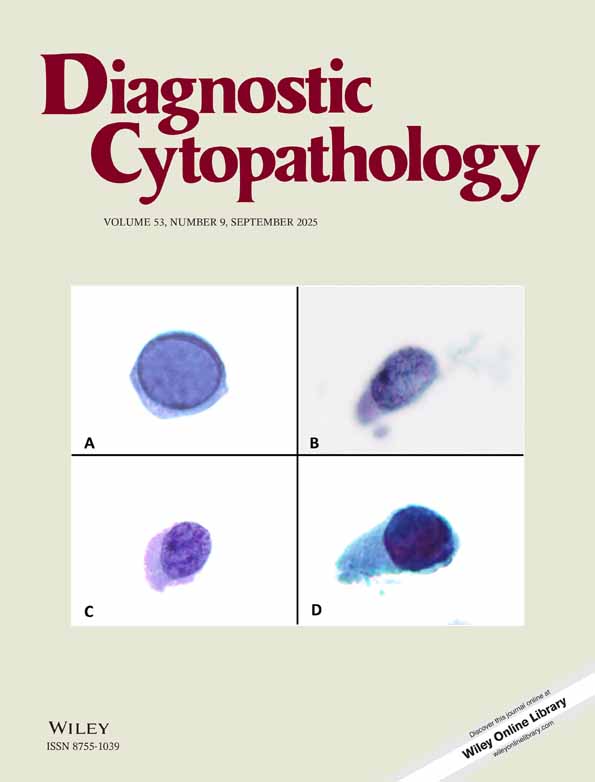Fine-needle aspiration biopsy of metastatic chordoma: Case report and review of the literature
Abstract
Chordoma is a distinct malignant neoplasm arising from the remnants of the notochord and occurring mostly in the fifth or sixth decade of life, and occupying most frequently the sacral area (Bibbo, Comprehensive Cytopathology 1997; p 534). Metastases of the neoplasm may occur in 10–40% of cases (Jenkins et al., Clin. Radiol. 1995;50:416–417). Because of its rarity, the diagnosis of chordoma may be difficult to render, especially on fine-needle aspiration biopsy (FNAB). However, a clear-cut distinction of chordoma from other neoplasms is of utmost importance, since the prognosis and treatment of the patient will depend on the final diagnosis. This distinction in the case of metastases can be made easily, where correlation of previous histology has been done and/or ancillary studies have been performed. Diagn. Cytopathol. 2000;22:104–106. © 2000 Wiley-Liss, Inc.




